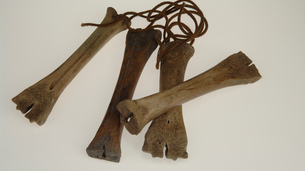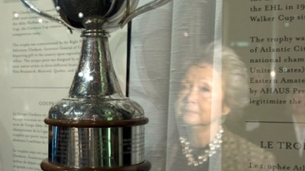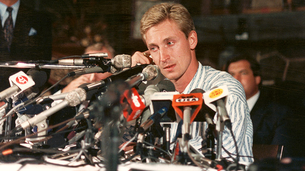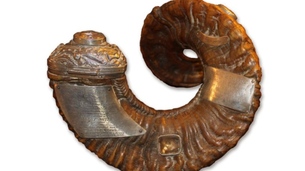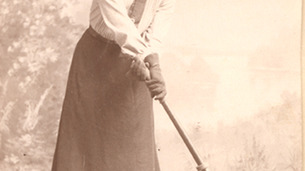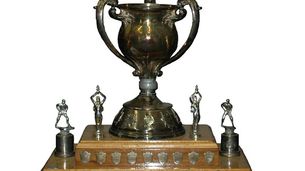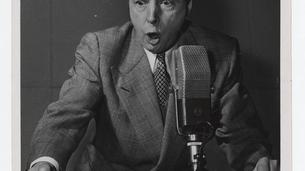River’s Frozen, Hockey Anyone?
Article by http://consultlefebvre.com
 The origins of the modern game of ice hockey are obscure, and a perusal of the history of the sport’s development is … well … conflicting. An entry for “ice-hockey” in the 1936 edition of the Encyclopedia of Canada, indicates the murky beginnings of the game:
The origins of the modern game of ice hockey are obscure, and a perusal of the history of the sport’s development is … well … conflicting. An entry for “ice-hockey” in the 1936 edition of the Encyclopedia of Canada, indicates the murky beginnings of the game:
“Ice-hockey is sometimes regarded as a game of Canadian origin; but this is true only in a limited sense. In its primitive form, the game was long known in England as ‘bandy’, in Ireland as ‘hurley’, and in Scotland as ‘shinty’. In Canada, it was known as ‘shinny’, obviously a corruption of the Scottish name. These early games were played, however, almost without rules, and with a ball or almost any other similar object for a ‘puck’. The present game of ice-hockey, with its fixed number a side, and its standardized rules and equipment, does seem, however, to have originated in Canada.“1
Nationality can play a role in one’s view of the development of ice hockey. For instance, as with the modern game of golf, which had precedents in Dutch game of kolf, ice hockey has vague similarities to the Dutch game of ijskolf – essentially the game of kolf played on ice with a round ball. Additionally, the Irish field game of hurley possibly was adapted to the winter climates of England and then Nova Scotia in the 18th century; and the stick-and-ball games of Canadian First Nations may have contributed to the development of ice hockey as well. Most agree that the first modern indoor game of ice hockey occurred in 1875, in Montreal, played by students from McGill University.
The latest discoveries into the history of both field hockey and ice hockey can be found at the Society for International Hockey Research (SIHR).
This collaborative effort is establishing that ice hockey was a winter adaptation of the old stick-and-ball games known by the names of hurling, bandy, and shinty, and that the term “hockey” began to be used in London in the mid-18th century. Gathered on the SIHR website are the following historical references.
In 1776, Richard Johnson (1734-1793), under the nom-de-plume “Master Michel Angelo,” published in London the illustrated volume Juvenile Sports and Pastimes in which he devoted a chapter to “New Improvements on the Game of Hockey.” This was the second edition of the volume, as the first had been published in 1773 or 1774.2 The game, which Johnson played as a youth, he described as “a noble and manly exercise, but is proper only for the cooler months of the year, as it requires a great share of activity. It was undoubtedly first taken from the Irish game of Hurling, which it resembles in almost every respect.“ The equipment included the goals, hockey-sticks, and the “hockey.”
The goals, made of very long pieces of briar with ends stuck in the ground, formed an “erect arch.” The sticks, which were a bit more difficult to obtain (and which Johnson, as a boy, had traded a mince-pie for a particularly fine one), were a yard long and made of wood, curved at the end, and thicker at bottom. The “hockey” or what is now known by the Canadian term puck, “must be made of the largest cork-bung you can get. Cut the edges round, and then it is prepared for use.”
Johnson’s description of the playing of the game sounds remarkably like contemporary field hockey, but 18th century English field hockey was played with a flat cork bung instead of a ball:
“The goals being fixed, the hockey prepared, and the parties agreed upon, you then proceed to your sport in the following manner. Both parties meet as nearly as possible, in the middle between the two goals, when the hockey is tossed up, and every one tries his best to beat the hockey through the goals of his antagonist; which being accomplished, the game is over. I have known a game to last for two or three hours … There is a wide difference in merely playing this game, and playing it genteely. Some boys are of such an eager, warm disposition, that they care not whom they hurt, or whose skin they break, so that they get at the hockey; but this is the mark of a bad player.”
Aside from Richard Johnson’s writings, the earliest contemporary reference (not a later remembrance) to the playing of a winter game of field hockey is from a personal letter. In December of 1799, writing from Chesham, Buckinghamshire, England to his parents in Guernsey, Channel Islands, fourteen-year-old schoolboy William Pierre Le Cocq penned his description of playing hockey:
“Thursday, December 17, 1799
I must now describe to you the game of Hockey; we have each a stick turning up at the end. We get a bung. There are two sides one of them knocks one way and the other side the other way. If any one of the sides makes the bung reach that end of the churchyard it is victorious.“3
* * * * *
These two pieces of historical evidence add up to the English origins of hockey, but early visual evidence for the playing of the game on ice has been elusive – until now. Last year I came across a 1797 English stipple engraving which supports the precedent for ice hockey in England in the late 18th century, and, as it turns out, is the earliest known representation of a hockey-like game played on ice.

The earliest known depiction of a hockey-like game played on ice with a "bung" or "puck." Hand-colored stipple engraving published by Joseph Le Petit, London, 1 September 1797. Private Collection.
The image, a setting of a frozen body of water with an obelisk on land in the background, depicts what is probably the River Thames (which froze over in the winter of 1794-95, and again in December 1796) in the vicinity of the King’s Observatory at Kew/Richmond. Two fellows with skates are on the ice: the lad at right is adjusting his skates; the one in the center wears Dutch-looking krulschaatsen or curl skates, and holds a curved stick. But, instead of the expected round ball of ijskolf, a flat bung is in the foreground. The print is inscribed in the plate, “London Published by J Le Petit 22 Suffolk Street, Middlesex Hospital 1st Sep 1797“.
Joseph Le Petit Jr. (London c. 1770 – 1858 Dublin) was a member of a French immigrant family in the United Kingdom. Little is known of Le Petit, who worked between 1797 and 1820 in London and then Dublin, publishing a variety of prints.
Although the lower margin of the print has been trimmed and designer and engraver therefore are not identified, a similar 1798 print published by Le Petit titled Winter, in the British Museum’s collection, was drawn by the Anglo-Dutch artist Benedict Anthony van Assen (1767 – c. 1817), and engraved by one Piercy Roberts.
Van Assen’s drawing is similar enough for a loose attribution of the work to him, but Piercy Roberts’ style is not as close as that of another stipple engraver who worked with Le Petit and Van Assen – his name is known only as “I. Burrows.” Two prints by Burrows are located, the first published by Le Petit in 1798 and titled Crowning the Bust of Captain Cook is at Grosvenor Prints in London. The second, titled Belinda, or the Billet Doux from 1794 is at the British Museum.
Very likely the 1797 Le Petit “ice hockey” print was drawn by Van Assen and engraved by Burrows, recording what was a common-enough winter sport to garner the attention of the artists and publisher, who themselves were young men and possibly enjoyed playing the game.
Recently, I was so curious about the Le Petit print that I contacted the folks at the SIHR to take a look at it. Their reply – “What you have here is the first engraving / painting depicting a stick and ball game on skates, which is / or that resembles ice hockey … at least what we are aware of at this moment …. Although the year is still young, this is by far the most exciting find so far (and historically important).”
With this picture on a piece of 215-year-old paper, the origins of ice hockey are a little less obscure.
Many thanks to James Milks, Patrick Houda and Dr. Carl Gidén of the Society for International Hockey Research for their assistance and evaluation.
Notes:
1Wallace, W. Stewart, Editor, The Encyclopedia of Canada, v. III. Toronto: University Associates of Canada Ltd., 1936, p. 237.
2 No copies of the first edition are located, but two copies of the second edition of Johnson’s Juvenile Sports and Pastimes exist – in the Douce Collection of Bodleian Library, Oxford, and in Rare Books and Special Collections, Princeton University Library / Society for International Hockey Research.
3 Collection of Priaulx Library, Island of Guernsey, Channel Islands, England / Society for International Hockey Research.

